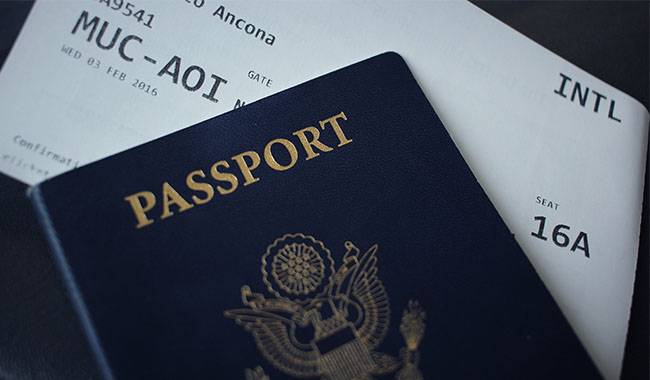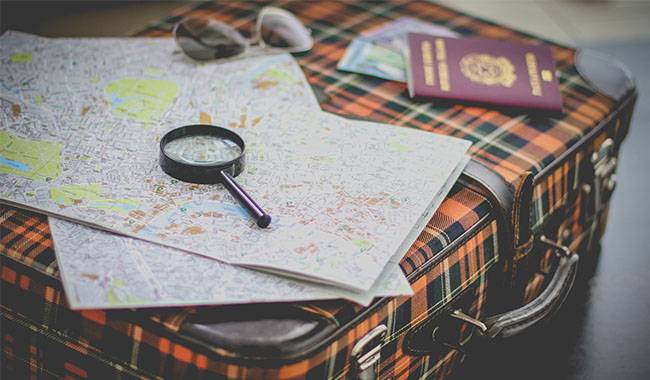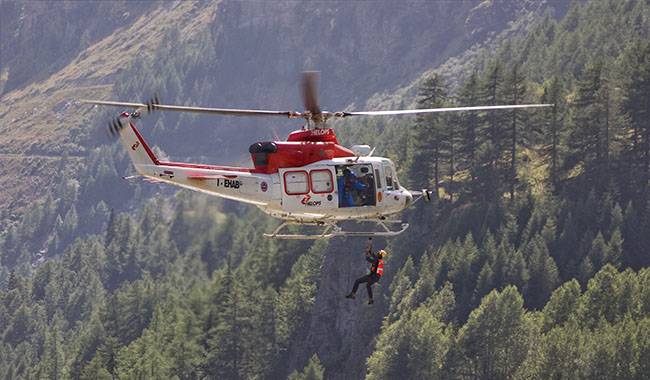
Every trip requires careful preparation: we choose the country of destination, we choose the logistics, we try to bring everything we need, including sports equipment, we choose the best accommodation and food …… But only at the last minute do we think about insurance! That’s how important insurance is. You will learn more about About Hiking and Travel Insurance by LCNOutdoors article.
Why Do We Need Travel Insurance
European and American tourists are used to buying insurance before a trip or sporting activity. This is mainly due to expensive medicines and the high cost of medical and transport services in Europe.
Although Southeast Asia has a less developed culture of active leisure insurance than European countries, when traveling abroad, American travelers should keep in mind that.
“The state denies responsibility for the costs of medical assistance, medical evacuation, and the return of the body (remains) of a citizen found abroad to the U.S. Commonwealth. If these costs are incurred, they should be covered by insurance purchased prior to travel or paid for by the citizen, his or her relatives, and other interested parties at their own expense.”
Before purchasing insurance, you should familiarize yourself in advance with the destination country’s minimum coverage requirements for the duration of your stay. For example, when visiting Canada, the recommended coverage is $50,000 to $100,000; to Schengen countries, coverage starts at €40,000; and when visiting Southeast Asian countries, coverage should ideally exceed $50,000, as treatment at local clinics can be very expensive.
What Is Included In Active Sports And Recreation Insurance
Travelers insurance, or travel insurance abroad, includes two types of coverage
- Service indemnity. In the event of an insured event, the insurance company provides assistance (transportation, treatment, diagnosis) to the insured traveler at the place where the insured event occurs.
- Compensatory reimbursement. After negotiating with the insurance company, the traveler pays all expenses himself/herself and then submit documentation to the insurance company upon return to his/her home country, and the insurance company reimburses all verified expenses.
For sports or outdoor activities abroad, the insurance policy has a list of recommended insurance risks. It includes medical expenses, medical transportation costs, and some other potential organizational costs.
Medical and other emergency expenses.
- emergency medical care.
- Transportation/evacuation by appropriate transportation, including a helicopter.
- emergency dental care.
- repatriation costs.
- Medications for daily use.
Medical, transportation, and other expenses.
- Organization of any kind of search and rescue operations (crevasse, avalanche search, etc.) using appropriate transportation, including helicopters.
- Transportation related to the early return.
- your accommodation until your return.
- Expenses for third-party visits.
- Costs for the return of minor children.
- Telephone conversations with service companies.
- Delivery of emergency information.
The most important condition: the insurance contract must state the type of sports or recreational activities that the tourist intends to engage in during the trip.
How To Check If The Campaign Is On The Insurance Policy
Many insurance companies operate under a sports risk classification table where some sports or outdoor activities are listed in a certain class. To check if the correct sport or leisure activity is included in the policy, you should ask the insurer or retailer where it is listed in the document. This can be in the policy or in the insurance company’s program.
In-depth material on insurance for skiers or snowboarders for those who like to see and hear.
Additional Risks For Travelers Insurance

Travel health insurance can supplement this risk.
- Accident – Provides monetary compensation in the event of injury, partial or total disability, and loss of life of the insured due to an accident.
- third party liability – covers the cost of compensation for damage (bodily and property) caused to third parties during the trip.
- Baggage insurance – the scope of risk may include possible loss of baggage due to theft, wreckage, vehicle accidents, etc.
- Scheduled Flight Delay – You will be reimbursed for expenses (e.g. airfare, hotel, fuel surcharge) in case of scheduled flight as well as international flight delay.
Injury benefits are paid as a percentage of the insured amount based on an injury schedule. Each insurance company has its own injury benefit schedule. The higher the amount of coverage, the higher the payout.
For complex injuries or surgeries, where travelers usually pay out of pocket, including this risk in the policy is a good opportunity to recoup the cost depending on the type of injury sustained.
Let’s say you sustain a serious shoulder injury while skiing. But you have taken prior notice and purchased a comprehensive insurance policy covering the risk of an accident for a trip abroad in the amount of $10,000. The assistance company will then organize medical assistance on-site, transportation and accommodation in the hospital, diagnosis, and treatment, hospital accommodation, and transportation home. And when you return home, you can receive within 30 days a payment from the insurance company based on the application, medical certificate, and diagnosis at a rate of 20% from the $10,000, which will give you $2,000. This amount should be enough to cover the cost of your recovery from your injury, medical supplies, or medications for rehabilitation.
Therefore, when traveling abroad, it is a good idea to purchase a comprehensive insurance policy and to include the option of accident insurance in your travel policy in advance.
What Should I do in case of an Accident And Why do I Need Assistance Services?
In addition to the name of the insurance company, the policy always includes the name of the assistance company (service provider) and the telephone number to call. Usually, the qualification and rating of the insurance company play a decisive role in the choice of insurance.
The service company helps to quickly coordinate the local services (rescue teams, coordination and rescue centers, etc.) to evacuate the injured from the accident scene in an appropriate manner. This company coordinates the case from the initial call to assistance / patient discharge/transportation of the injured to their permanent place of residence if necessary / organization of air tickets, evacuation, additional hotel accommodation/cab, and other services.
Before you travel, you should print out your insurance policy and take it with you or save it electronically on your cell phone. If you are traveling with a friend or tour group, you should exchange your insurance information so that in the event of an accident, you won’t waste time looking up the number to contact your insurance company and the insured’s personal information. When disaster strikes, not a single minute should be wasted. If you are traveling in Europe, it is a good idea to find out the number of the local emergency services and write it down on your cell phone.
The following information must be provided when contacting the insured or a member of the group regarding an insured event
- The name of the insurance company, policy number, and expiration date
- Reason for requesting help, location (country, city, GPS coordinates)
- Country code and telephone number where the service coordinator can contact the traveler.
Before you travel, you should consider in advance what means of communication you can use when you travel, especially if you are in a remote part of the world where there is no cell phone service. In this case, you can buy a satellite phone, a tracker, and walkie-talkies to communicate with your group. The choice of such products is now very wide.
How To Choose A Policy For Active Sports And Recreation In The Mountains

If you enjoy active recreation in the mountains, be aware of the risks of helicopter evacuation or mountain search and rescue operations, which are included in your policy. These costs can be quite significant for insurers and not all insurers are committed to honoring these costs. For example, the cost of a helicopter evacuation is around $5,000 in the Caucasus in Europe and $6,000 in Nepal and Kyrgyzstan. This explains the high cost of mountain sports or recreation insurance. This can be 5 times the cost of regular travel insurance!
You should read the insurance regulations carefully and check the wording of the policy before you buy the insurance. It is advisable to specify additional conditions for evacuation and rescue by helicopter in the insurance policy. If not, you can ask the seller or insurance company to include this wording in the policy.
The most dangerous mountains for climbing and hiking in 2017 are Kyrgyzstan, the United States, Nepal, and Tajikistan.
Many skiers and climbers already know from experience that it is possible to purchase local European insurance in advance when visiting the Alps. Alpine clubs (CAF, CAI, DAV) offer their members the mountain sport of their choice or include it in their ski pass. This insurance includes search and rescue services using helicopters in case of emergency. It also covers medical care, repatriation, and other activities. Therefore, when traveling to the Eurozone for active mountain sports and recreation, it is advisable to purchase not only U.S. travel insurance with the option to engage in the desired sport, but also local specialty insurance that will cover local services for mountain evacuation and rescue services.
When purchasing a policy for travel within Europe, it is important to keep one thing in mind. According to the terms of the policy, the administrative-territorial unit indicated on the policy as the insured area must not be the permanent residence of the insured.
For example, if a tourist whose place of residence is Switzerland goes skiing in the Alps, he cannot purchase a traveler’s insurance policy because he is in the territory of the administrative-territorial unit of his place of residence. In this case, the tourist can purchase an accident insurance policy and receive compensation from the insurance company in case of injury.
According to the rescue policy, the tourist can get the following assistance.
- ambulance, the
- hospitalization.
- outpatient care.
Therefore, in the absence of a travel policy, medical transportation costs, travel costs, dental costs, telephone costs, and repatriation costs will be borne by the tourist or his relatives.
How To Evacuate By Helicopter In A Foreign Country
Helicopter rescue efforts in mountainous areas are always high-risk: thin air at high altitudes limits the capabilities of rotorcraft, while air currents and turbulence increase the risks of piloting.
Pilots participating in mountain rescue operations require exceptional composure and the highest level of piloting skill. Such skills can only be acquired through constant systematic training in high-altitude flying and special rescue missions.
Currently, in several countries, search and rescue operations in mountainous areas are mainly carried out by the Ministry of Emergency Situations. In other countries, only a few commercial companies have been licensed to organize rescue operations. For example, in the Caucasus, in addition to the Ministry of Emergency Situations, there are commercial helicopter companies that are ready to provide services of this nature. Their employees are specially trained by the Swiss airline Zermatt.
According to helicopter pilot Arseny, the AS350 and SA315B light helicopters for mountain operations and rescue have distinct advantages over heavy helicopters. Light helicopters are specifically designed to operate in high mountain conditions. For example, the AS350 is believed to have landed on Mount Everest, the highest mountain in the world, while the SA315B holds the absolute record for climbing to an altitude of 12,442 meters. For this reason, helicopter evacuation services are available to insured persons in mountainous areas of the United States or Europe if required, subject to the availability of profile insurance.